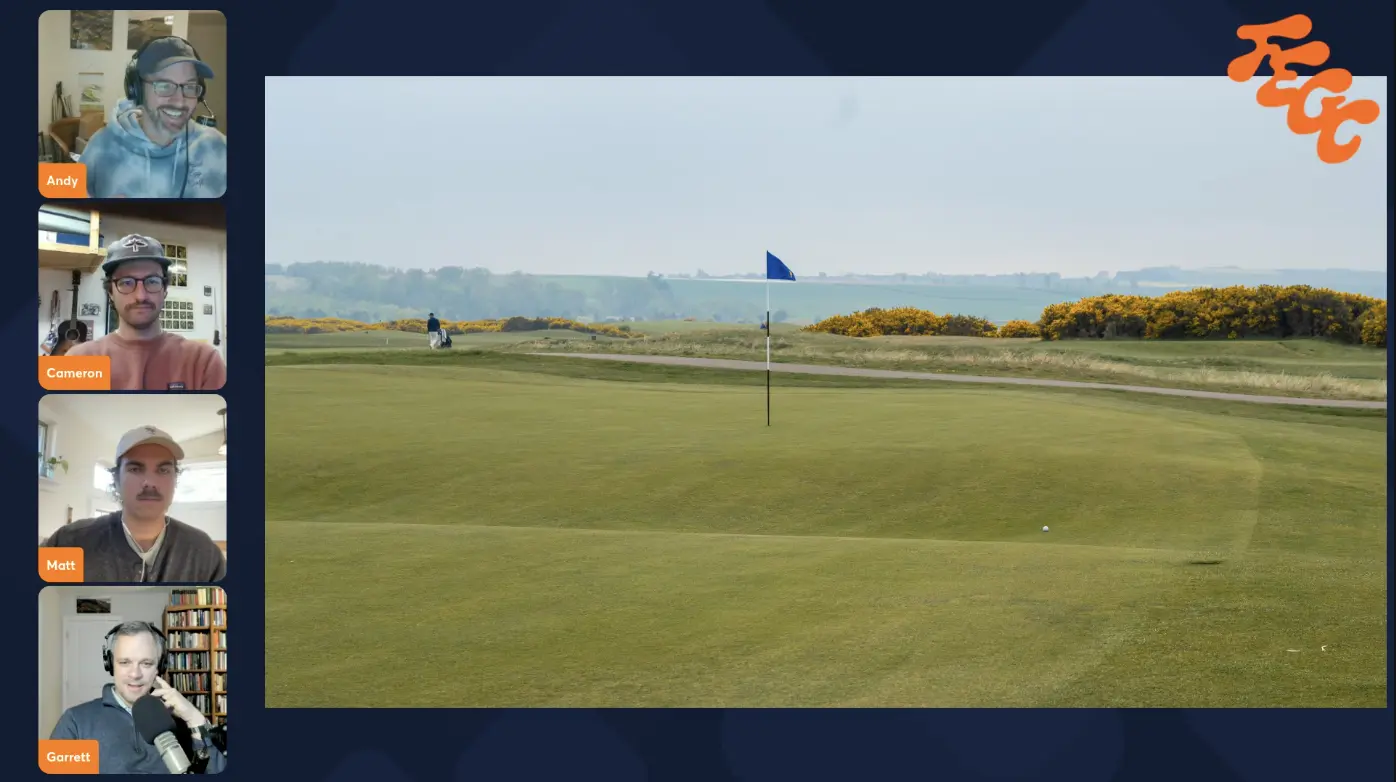What Role Should Private Clubs Play in Their Communities?
Clubs like Augusta National and Crystal Downs often have some form of community outreach; is it enough? What more could/should be done?


We didn’t necessarily intend for this to be an accessibility-focused theme day, but when Brendan and Garrett read about Benzie Day and then Andy’s essay on it, respectively, they were prompted to pivot to further discussion on the topic of private clubs and what they should be doing for their local communities.
Brendan: I saw a bit about this going around on Tuesday and thought it was charming. It is a nice tradition and I applaud Crystal Downs for instituting it. Is there an unintended teasing element to showing you just a little bit of what you’re not able to see the other 364 days a year? In a very soft, non-critical voice: mayyyyybe. But should it become more standard for the other great private courses in America? Yes. I know some have suggested various “tolls” that these courses should have to pay with a percentage of open public days. These are not the kinds of places that like being told what to do, but is there a goal or standard practice that should become accepted? Is Benzie Day a model?
Garrett: Benzie Day is certainly a charming and wholesome tradition, one that both Benzie County residents and Crystal Downs members seem to enjoy. But I’m not sure it’s a model that other private golf clubs could realistically follow.
Crystal Downs is uniquely well-situated to stage an event like this. As of the 2020 census, Benzie County had just 17,970 residents. Among the 30 or so most highly ranked private clubs in the U.S., only Sand Hills is substantially more remote. Even Prairie Dunes, off the beaten track as it is, sits on the fringes of a 40,000-strong population center. If most well-known American golf clubs tried something like Benzie Day, they’d get overrun.
That said, there’s a broader question here: should private golf clubs be expected to give some kind of playing access to non-members? My automatic answer is obviously yes. Granted, the rules of not-for-profit status in the U.S. restrain most private clubs from advertising public green fees. But as Benzie Day proves, there are other ways to let people in your gates.
When I took my soup up, a board member (retired CEO of a Fortune 500 company) was in the kitchen cooking the 200 hundred hot dogs he brought for everyone.
— Ed Butt (@EdB1947) October 1, 2024
HOWEVAH, I don’t think access—in the limited sense of open tee times—is the most important issue here. What I’d rather see from top golf clubs is simply a commitment to their neighbors. This can take many forms: a robust caddie program providing a pathway to college scholarships, a willingness to host local and regional competitions, a close relationship with a nearby high-school or college golf program, a set of charitable initiatives driven and funded by members, and so on.
High-profile American golf clubs are, among other things, rare concentrations of wealth and power. Allowing locals to play once a year is probably the least of what this wealth and power can accomplish.
Have I pivoted too far from the topic at hand?
Brendan: We may have strayed, but I like where we’re wandering. I do think more elite clubs have embraced a community mission in recent years, and Benzie Day is the instant and small example. The trend also includes the most well-endowed of them all, Augusta National, which has its own employee days and has really tried to expand its impact in the community. No club has ANGC’s financial wherewithal or need to maneuver public scrutiny, but it does have a massive influence and here it has embraced more of the outreach commitment you’ve discussed.
The ability to impact neighbors and the community is most important. But I also think these efforts take, or could take, some of the sting out of potential architectural treasures feeling so walled off and undiscoverable. As an expert so steeped in the history of architecture, is there a course out there that you think would most serve the study, appreciation, and future trends of golf course design were it to be more open and available on some limited basis? Am I way too off topic here? Should not the best models be more available for wider study, immersion, and inspiration?
Garrett: I wouldn’t say I’m an “expert” in golf architecture so much as an expert at talking to experts, but yes, I would like to see more great private courses in the U.S. make themselves “available for wider study, immersion, and inspiration,” to use your well-tuned phrase. The best mechanism for doing that? I’m not sure, but hosting big tournaments is an under-appreciated one. It may be hard to get an actual tee time at Augusta National, for instance, but if you buy a ticket to Masters week or Saturday at the ANWA, you can analyze that golf course on the ground and in detail.
If I could force one more course to open its doors in this way (or in the Benzie Day way), I’d choose C.B. Macdonald’s National Golf Links. This is probably the most important work of golf architecture in American history, and it’s a shame that not all design enthusiasts get to see it in their lifetimes.
Additional Content
– Andy sparked this discussion with his original newsletter essay on Benzie Day, which you can read here.
This piece originally appeared in the Fried Egg Golf newsletter. Subscribe for free and receive golf news and insight every Monday, Wednesday, and Friday.
Leave a comment or start a discussion
Engage in our content with thousands of other Fried Egg Golf Club Members
Engage in our content with thousands of other Fried Egg Golf Members
Get full access to exclusive benefits from Fried Egg Golf
- Member-only content
- Community discussions forums
- Member-only experiences and early access to events











Leave a comment or start a discussion
Lorem ipsum dolor sit amet, consectetur adipiscing elit. Suspendisse varius enim in eros elementum tristique. Duis cursus, mi quis viverra ornare, eros dolor interdum nulla, ut commodo diam libero vitae erat. Aenean faucibus nibh et justo cursus id rutrum lorem imperdiet. Nunc ut sem vitae risus tristique posuere. uis cursus, mi quis viverra ornare, eros dolor interdum nulla, ut commodo diam libero vitae erat. Aenean faucibus nibh et justo cursus id rutrum lorem imperdiet. Nunc ut sem vitae risus tristique posuere.